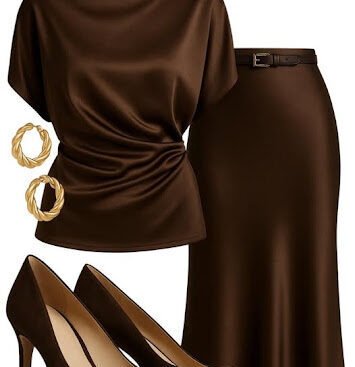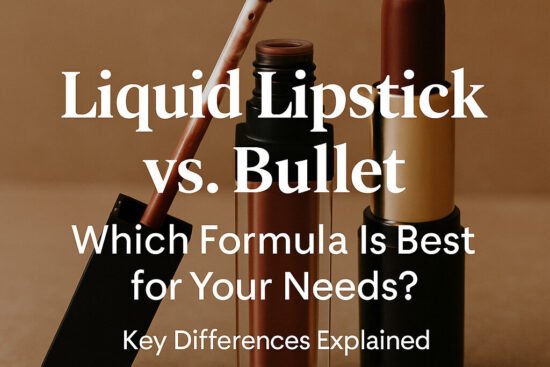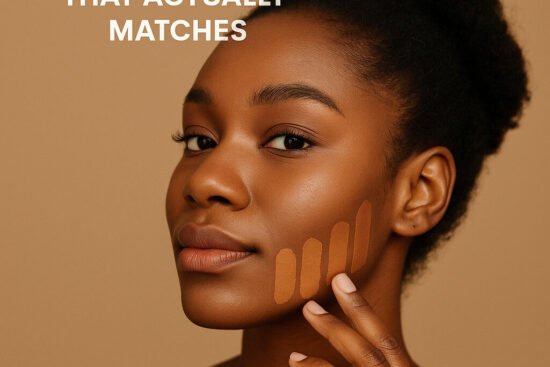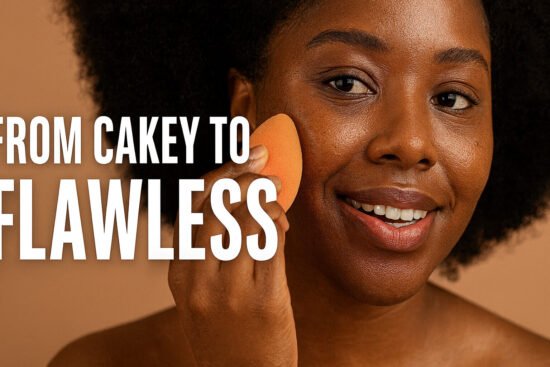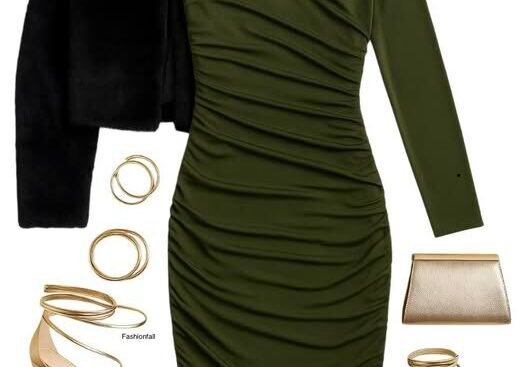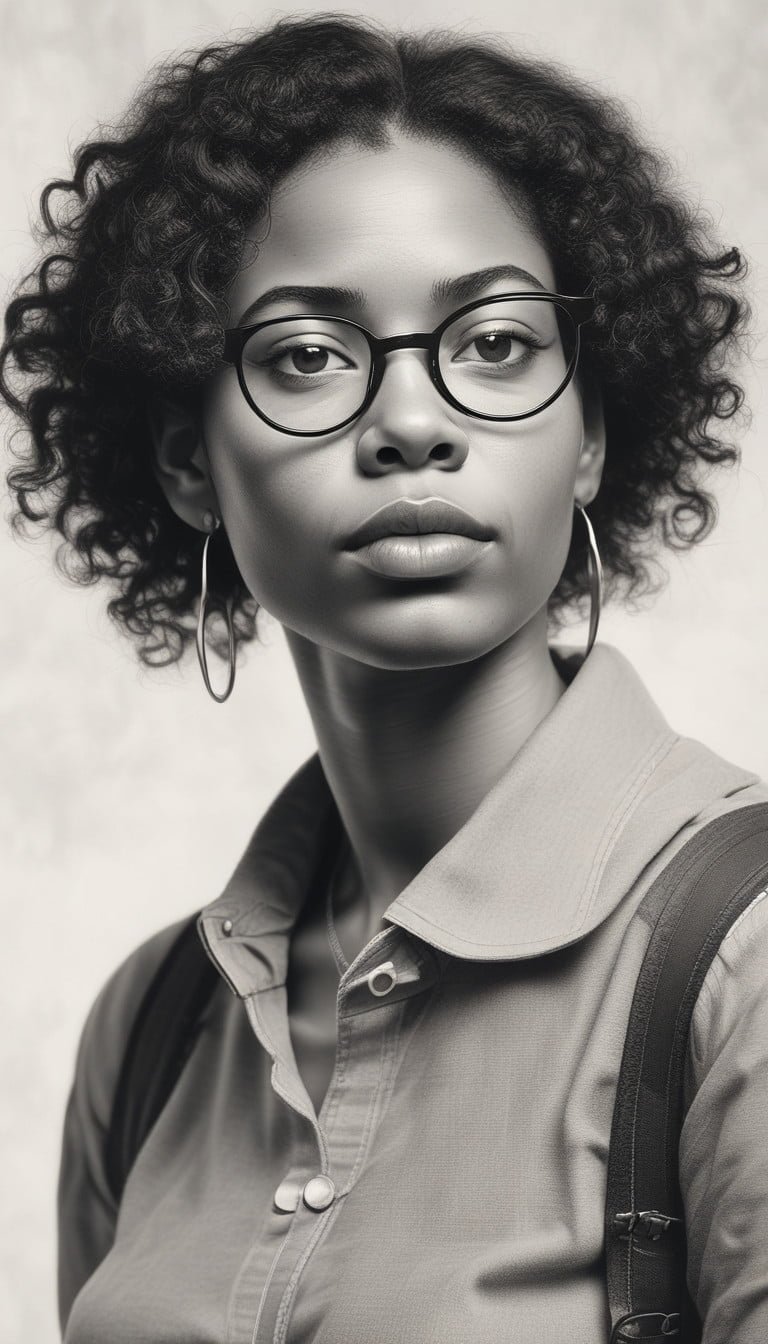
Having beautiful and healthy hair is something that all women strive for, and black women are no exception. However, maintaining and protecting natural hair can present its own unique challenges. From understanding the right products to use, to implementing protective hairstyles, black women have developed a variety of strategies to keep their natural hair strong and vibrant. In this article, we will explore some of these tried and tested methods that black women employ to protect and care for their natural hair, ensuring that it remains a source of pride and beauty.
Understanding Natural Hair
Definition of natural hair
Natural hair refers to hair that has not been chemically altered or treated to change its texture. It is the hair that grows naturally from the scalp without any permanent alterations. For black women, natural hair often means embracing their natural texture, which can range from coily to kinky.
Different types of natural hair textures
Black natural hair can be categorized into different types based on its texture. These include:
- Type 3: This hair type has defined curls and can be further divided into three subtypes – 3A (loose curls), 3B (tighter curls), and 3C (tight corkscrew curls).
- Type 4: This hair type is typically characterized by its kinky, coily, or tightly curled texture. It is further categorized into three subtypes – 4A (tight coils with an S pattern), 4B (tight coils with a Z pattern), and 4C (tightest coils with no defined curl pattern).
Understanding your natural hair texture is crucial for choosing appropriate products and establishing an effective hair care routine.
Understanding the unique needs of black natural hair
Black natural hair has unique needs due to its texture and structure. It tends to be more prone to dryness, breakage, and tangling. The tight curls and coils make it more challenging for the natural oils produced by the scalp to travel down the hair shaft, resulting in dryness. Additionally, the fragility of the hair strands requires careful handling to avoid breakage. Therefore, it is essential to understand and address these specific needs when caring for black natural hair.
Importance of Hydration and Moisturization
Why hydration is essential for natural hair
Hydration is crucial for natural hair as it helps maintain moisture levels and promotes hair health. Proper hydration prevents dryness, which can lead to brittleness, breakage, and excessive shedding. Hydrated hair is more elastic, stronger, and less prone to damage. It also enhances the natural shine and luster of the hair.
Tips on how to properly moisturize natural hair
To effectively moisturize natural hair, consider implementing the following tips:
- Deep Conditioning: Regular deep conditioning treatments help infuse moisture into the hair strands and nourish the scalp. Use a deep conditioner that suits your hair type and leave it on for the recommended time.
- Leave-in Conditioner: Applying a leave-in conditioner after washing or co-washing can help lock in moisture and provide additional hydration throughout the day.
- Water-Based Products: Look for hair products that have water listed as one of the main ingredients, as this will provide the much-needed hydration for your natural hair.
- Sealing in Moisture: After applying a moisturizer or leave-in conditioner, seal the moisture in with a natural oil or butter to prevent moisture loss.
- Regular Hydration: Spritzing your hair with water or a water-based moisturizer daily or as needed can help maintain moisture levels between wash days.
Products to use for maintaining hydration and moisture levels
Several products are specifically formulated to meet the hydration and moisture needs of natural hair. Some key products to include in your hair care routine are:
- Moisturizing Shampoo: Look for a sulfate-free shampoo that cleanses the scalp without stripping away natural oils.
- Deep Conditioner: Invest in a high-quality deep conditioner to restore moisture and nourish your hair.
- Leave-in Conditioner: Choose a leave-in conditioner that provides long-lasting moisture and acts as a detangler.
- Moisturizing Hair Masks: Incorporate a moisturizing hair mask into your routine for intense hydration and repair.
- Natural Oils: Opt for natural oils such as coconut oil, jojoba oil, or argan oil to seal in moisture and add shine without weighing the hair down.
- Moisturizing Hair Creams or Butters: Find a moisturizing cream or butter that caters to your hair’s specific needs, helping lock in moisture and reduce frizz.
Remember to adjust your product selection based on your hair type and individual preferences.
Creating and Implementing a Hair Care Routine
How to determine a suitable hair care routine
Creating a suitable hair care routine for natural hair involves understanding your hair’s needs and establishing a consistent regimen. Consider the following factors when determining your routine:
- Hair Type: Identify your natural hair type (3A, 3B, 4A, etc.) and research common practices and techniques recommended for your specific hair type.
- Scalp Health: Evaluate the condition of your scalp and address any issues such as dandruff or dryness. A healthy scalp is essential for promoting hair growth and overall hair health.
- Lifestyle Factors: Consider your lifestyle, including how often you exercise, swim, or expose your hair to heat styling. Adjust your routine accordingly to accommodate these factors.
- Product Testing: Experiment with different products to determine which ones work best for your hair type. Keep in mind that what works for someone else may not work for you.
- Desired Hairstyles: Take into account the hairstyles you prefer and incorporate appropriate care and maintenance strategies into your routine.
Importance of consistency in a hair care routine
Consistency is key when it comes to maintaining healthy natural hair. Establishing a consistent hair care routine helps your hair become accustomed to a specific regimen, making it easier to manage and predict its behavior. Regularly caring for your hair also allows you to monitor any changes or concerns, enabling you to address them promptly. Consistency ensures that your hair receives the necessary nourishment and protection it needs for optimal health and growth.
Different stages of a hair care routine for natural hair
A comprehensive natural hair care routine typically consists of the following stages:
- Cleansing: Start by cleansing your hair and scalp with a sulfate-free shampoo or a cleansing conditioner. Gently massage the scalp to remove dirt and product buildup.
- Conditioning: Follow up with a deep conditioner, specifically designed for natural hair, to restore moisture and softness. Allow the conditioner to sit for the recommended time before rinsing.
- Detangling: After rinsing out the conditioner, use a wide-tooth comb or your fingers to detangle your hair. Begin at the ends and work your way up to prevent breakage.
- Moisturizing: Apply a leave-in conditioner or moisturizer to damp hair to provide additional hydration and lock in moisture.
- Styling: Choose a suitable protective hairstyle or style your hair as desired, taking into consideration the health of your hair and scalp.
- Maintenance: Throughout the week, moisturize and protect your hair by spritzing it with water or a moisturizing spray, and seal in the moisture with a natural oil or butter.
Adapt this routine based on your hair’s needs and characteristics, and remember to regularly reassess and modify it as necessary.
Choosing the Right Products
Considering your hair type when selecting products
Selecting the right products for your natural hair is crucial in maintaining its health and appearance. Consider the following factors when choosing hair care products:
- Hair Type: Determine your hair type and choose products specifically formulated for your texture. This ensures the products will cater to your hair’s unique needs and help achieve the desired results.
- Porosity: Understand your hair’s porosity level (low, medium, or high) to select products that provide the appropriate level of moisture your hair requires.
- Ingredient Analysis: Read product labels to ensure they contain beneficial ingredients and avoid those that may be harmful or drying to the hair.
Reading product labels: ingredients to look out for and those to avoid
When examining product labels for natural hair, keep an eye out for the following beneficial ingredients:
- Natural Oils: Look for oils such as coconut oil, jojoba oil, and olive oil, which help nourish and moisturize the hair.
- Shea Butter: Shea butter is known for its moisturizing properties and can help soften and protect natural hair.
- Glycerin: Glycerin helps attract and retain moisture, keeping the hair hydrated.
- Aloe Vera: Aloe vera has soothing and moisturizing properties, promoting overall hair and scalp health.
Conversely, be cautious of products that contain the following ingredients, as they can be drying or damaging to natural hair:
- Sulfates: Sulfates, such as sodium lauryl sulfate (SLS) and ammonium laureth sulfate (ALS), can strip the hair of its natural oils and cause dryness.
- Silicones: Some silicones can cause buildup on the hair, leading to dullness and reduced moisture absorption.
- Alcohol: Alcohol-based products can be drying to the hair and scalp, causing frizz and breakage.
Product recommendations for black women with natural hair
While individual preferences may vary, here are some product recommendations suitable for black women with natural hair:
- Shampoo: As I Am Coconut Cleansing CoWash, SheaMoisture Jamaican Black Castor Oil Strengthen & Restore Shampoo
- Conditioner: TGIN Honey Miracle Hair Mask, Mielle Organics Babassu Oil & Mint Deep Conditioner
- Leave-in Conditioner: Kinky Curly Knot Today Leave-In Conditioner, Camille Rose Naturals Curl Love Moisture Milk
- Natural Oils: Jamaican Black Castor Oil, Jojoba Oil, Argan Oil
- Moisturizer: Cantu Shea Butter Leave-In Conditioning Repair Cream, Carol’s Daughter Black Vanilla Moisture & Shine Leave-In Conditioner
Remember to assess your hair’s specific needs and adjust your product selection accordingly. What works for someone else may not necessarily work for you, so it’s important to experiment and find the products that suit your hair best.
Protective Hairstyles for Natural Hair
What are protective hairstyles?
Protective hairstyles are hairstyles that shield the ends of the hair and promote healthy hair growth. These styles typically involve low manipulation and reduce the exposure of the hair to damaging elements such as heat, friction, and environmental factors. Protective hairstyles play a vital role in maintaining the overall health and length retention of natural hair.
Benefits of protective hairstyles for natural hair
There are several benefits to incorporating protective hairstyles into your natural hair care routine:
- Length Retention: Protective hairstyles help minimize breakage and tangling, promoting length retention and reducing split ends.
- Moisture Preservation: Since protective styles require less manipulation and exposure to external elements, they help retain moisture, preventing dryness and breakage.
- Versatility: Protective styles offer a wide range of options, allowing you to experiment with different looks while still protecting your hair.
- Time-Saving: Once a protective style is installed, it requires minimal daily maintenance, saving you time and effort on your hair care routine.
- Hair Growth: By reducing potential damage and breakage, protective hairstyles create a conducive environment for hair growth and can contribute to healthier, longer hair.
Examples of protective hairstyles suitable for natural hair
There are numerous protective hairstyles that can be worn by black women with natural hair. Some popular options include:
- Braids: Box braids, Senegalese twists, or cornrows are excellent protective styles that can be customized with different lengths, sizes, and patterns.
- Buns and Updos: Tucking your hair away in a bun or an updo helps protect the ends and prevents friction and tangling.
- Wigs and Weaves: Wearing wigs or weaves gives your natural hair a break while still allowing you to switch up your style.
- Protective Styles with Extensions: Various protective styles, such as faux locs, crochet braids, or Marley twists, provide added length and protection for your natural hair.
Remember to choose styles that suit your hair’s needs and maintain them properly to maximize their protective benefits.
Maintaining Healthy Scalp
Why scalp health matters
Maintaining a healthy scalp is essential for overall hair health. The scalp is the foundation from which hair grows, and its condition directly affects the quality and growth rate of the hair. A healthy scalp promotes proper blood circulation, nourishment, and the production of natural oils, contributing to strong, shiny, and resilient hair.
Signs of an unhealthy scalp
It’s important to be aware of potential signs or indications of an unhealthy scalp. Some common signs include:
- Dryness or Flakiness: An excessively dry or flaky scalp may indicate a lack of moisture, which can lead to itchiness and dandruff.
- Itching and Irritation: Persistent itching and irritation can be signs of an underlying scalp condition or sensitivity.
- Excessive Oiliness: While some oiliness is normal, an overly oily scalp can indicate an imbalance or potential scalp condition.
- Scalp Tenderness or Pain: Pain or tenderness on the scalp may be an indication of inflammation, infection, or a scalp condition that requires attention.
- Hair Thinning or Hair Loss: An unhealthy scalp can result in hair thinning or hair loss, as the follicles may be weakened or damaged.
If you experience any of these signs, it is advisable to consult a dermatologist or a trichologist for a professional evaluation and personalized treatment plan.
Scalp care techniques and products for maintaining scalp health
To maintain a healthy scalp, incorporate the following techniques and products into your hair care routine:
- Gentle Cleansing: Use a gentle shampoo that cleanses the scalp without stripping away its natural oils. Massage the scalp in circular motions to stimulate blood flow and remove any buildup.
- Regular Exfoliation: Exfoliating the scalp once a month with a scalp scrub or a gentle exfoliating brush can help remove dead skin cells and promote a healthy scalp environment.
- Scalp Massages: Regularly massage your scalp using your fingertips to improve blood circulation and stimulate hair follicles.
- Avoid Overwashing: Washing your hair too frequently can strip the scalp of its natural oils and lead to dryness. Opt for a washing frequency that suits your hair type and scalp condition.
- Scalp Serums or Tonics: Incorporate scalp serums or tonics that contain stimulating ingredients like peppermint oil or tea tree oil to promote a healthy scalp environment.
- Protection from the Elements: Protect your scalp from extreme weather conditions, such as harsh sunlight or cold temperatures, by wearing appropriate head coverings.
Remember to listen to your scalp and adjust your regimen as needed to maintain optimal scalp health.
Dealing With Hair Breakage and Shedding
Causes of hair breakage and shedding
Hair breakage and shedding can be caused by various factors, including:
- Improper Handling and Styling: Rough handling, excessive heat styling, and tight hairstyles can weaken the hair strands and lead to breakage.
- Lack of Moisture: Dry hair is more prone to breakage, as it lacks the necessary elasticity and flexibility to withstand manipulation.
- Protein Imbalance: Overuse of protein-based products or a lack of protein in the hair care routine can result in hair breakage.
- Environmental Factors: Exposure to harsh weather conditions, pollutants, and excessive UV rays can weaken the hair, leading to breakage and shedding.
- Health Issues: Underlying health conditions, hormonal changes, and nutritional deficiencies can affect hair health and contribute to breakage and shedding.
Ways to minimize hair breakage and shedding
To minimize hair breakage and shedding, consider implementing the following practices:
- Gentle Handling: Handle your hair with care and avoid pulling, tugging, or brushing aggressively. Detangle using a wide-tooth comb or your fingers, starting from the ends and working your way up.
- Protective Styling: Embrace protective hairstyles that minimize friction and reduce manipulation, helping to prevent breakage caused by daily styling.
- Regular Trims: Schedule regular trims to get rid of split ends and prevent them from traveling up the hair shaft, causing damage and breakage.
- Balanced Moisture and Protein: Maintain a healthy balance of moisture and protein in your hair care routine to ensure your hair remains strong and resilient.
- Avoid Harsh Chemicals: Minimize the use of chemical treatments that can weaken the hair strands, such as relaxers or excessive use of hair colorants.
- Balanced Diet: Maintain a balanced diet rich in vitamins, minerals, and essential nutrients to promote overall hair health and minimize breakage.
Treatment options for excessive hair breakage and shedding
If you experience excessive hair breakage and shedding, it may be beneficial to explore additional treatment options such as:
- Hair Masks and Treatments: Incorporate weekly or monthly hair masks and treatments specifically formulated to repair and strengthen damaged hair.
- Scalp Treatments: Addressing potential scalp issues, such as dandruff or inflammation, can help create a healthier environment for hair growth.
- Consult a Professional: If breakage and shedding persist despite your efforts, consult a professional hairstylist or a trichologist for personalized guidance and treatment recommendations.
Remember that healthy hair undergoes a natural shedding process, so some shedding is normal. However, if you notice sudden or excessive hair loss, it is important to seek professional advice to determine the underlying cause and appropriate course of action.
Influence of Diet and Lifestyle on Hair Health
Healthy foods that promote hair growth and strength
A balanced diet plays a vital role in promoting hair growth and overall hair health. Include the following nutrient-rich foods in your diet to support healthy hair:
- Protein: Incorporate lean sources of protein such as poultry, fish, beans, and nuts, as hair strands are primarily composed of protein.
- Omega-3 Fatty Acids: Consume foods rich in omega-3 fatty acids, such as salmon, walnuts, and chia seeds, to support scalp health and reduce inflammation.
- Iron: Include iron-rich foods like spinach, lentils, and lean red meat to prevent iron deficiency, which can contribute to hair loss.
- Vitamins and Antioxidants: Eat a variety of fruits and vegetables, particularly those rich in vitamins A, C, and E, to support hair growth and protect against oxidative stress.
- Biotin: Biotin-rich foods like eggs, almonds, and avocados can promote healthy hair growth and prevent brittleness.
Remember to prioritize a well-rounded diet that nourishes your overall health, as this will also reflect in the condition and strength of your hair.
Lifestyle changes to enhance hair health
Aside from a healthy diet, certain lifestyle modifications can contribute to enhanced hair health:
- Regular Exercise: Engaging in regular physical activity helps improve blood circulation, including to the scalp, which can promote hair growth.
- Stress Management: High-stress levels can contribute to hair loss and weaken the hair. Practice stress management techniques, such as meditation or yoga, to reduce stress and promote overall well-being.
- Proper Sleep: Aim for sufficient, quality sleep as it is essential for optimal hair growth and repair.
- Hydration: Stay hydrated by drinking an adequate amount of water daily. Hydration helps maintain the moisture balance in the hair and promotes overall health.
- Avoid Smoking: Smoking restricts blood flow and can negatively impact hair health. Quitting smoking or minimizing exposure to secondhand smoke can contribute to healthier hair.
Small lifestyle changes can have a significant impact on your hair health, so strive to make choices that support overall well-being.
Impact of stress and anxiety on hair health
High levels of stress and anxiety can have a significant impact on hair health. Chronic stress can disrupt the hair growth cycle, leading to excessive shedding and hair loss. Additionally, stress and anxiety may cause individuals to engage in habits such as excessive hair pulling (trichotillomania) or scalp rubbing, which can damage the hair and scalp.
Managing stress and anxiety is crucial for maintaining healthy hair. Incorporate stress-relief techniques such as exercise, meditation, deep breathing exercises, or seeking support from a mental health professional. By addressing and managing stress, you can help maintain the overall health and vitality of your hair.
Use of Hair Tools and Accessories
Types of hair tools suitable for natural hair
Using the right tools can make a significant difference in caring for and styling natural hair. Some essential hair tools suitable for natural hair include:
- Wide-Tooth Comb: A wide-tooth comb is ideal for detangling hair, as it helps minimize breakage and tangling.
- Satin or Silk Pillowcase: Sleeping on a satin or silk pillowcase reduces friction and minimizes potential damage to the hair caused by cotton pillowcases.
- Satin or Silk Scarf or Bonnet: Wearing a satin or silk scarf or bonnet while sleeping helps protect the hair, retain moisture, and reduce frizz.
- Diffuser Attachment: A diffuser attachment for a blow dryer can help distribute heat more evenly, minimizing potential heat damage.
- Heat Styling Tools with Temperature Control: If using heat styling tools, opt for those with adjustable temperature settings to prevent excessive heat exposure to the hair.
How to correctly use hair tools to avoid damage
To avoid damage while using hair tools, keep the following tips in mind:
- Gentle Handling: Use hair tools with a gentle touch, avoiding unnecessary tugging or pulling. Be patient while detangling to prevent breakage.
- Heat Protection: Apply a heat protectant spray or cream before using heat styling tools to minimize damage caused by heat.
- Proper Technique: When using heat styling tools, such as flat irons or curling irons, ensure they are set at an appropriate temperature for your hair type and use proper technique to avoid overheating and damage.
- Use Lower Heat Settings: Opt for lower heat settings on blow dryers and other heat tools whenever possible to reduce the risk of heat damage.
- Avoid Excessive Use: Minimize the use of heat styling tools to prevent overexposure, as excessive heat can cause dryness, breakage, and loss of hair elasticity.
Remember to prioritize the health of your hair over achieving a specific style and be mindful of the potential damage that hair tools can cause if used improperly.
Choosing the right hair accessories for natural hair
When choosing hair accessories for natural hair, consider the following tips:
- Satin or Silk Scrunchies: Opt for satin or silk scrunchies to minimize friction and reduce breakage while securing your hair in a ponytail or bun.
- Hairbands with No Metal Parts: Choose hairbands without metal parts to prevent snagging or breaking the hair strands.
- Hair Clips or Bobby Pins: Look for hair clips or bobby pins that are sturdy, have a good grip, and won’t cause unnecessary tension or breakage.
- Headbands or Headwraps: Consider using headbands or headwraps made from satin or silk materials to protect the hair, add style, and prevent frizz.
- Hair Picks or Afro Combs: Find hair picks or afro combs with wide teeth that can easily glide through your natural hair without causing excess breakage.
Avoid accessories with sharp edges or rough materials that can damage or snag the hair strands. Experiment with different accessories to find what works best for your hair type and desired style.
Professional Hair Care
When to seek professional help for hair care
While much of natural hair care can be done at home, there are instances when it is beneficial to seek professional help. Consider consulting a professional hairstylist or trichologist under the following circumstances:
- Scalp Issues: If you are experiencing persistent or severe scalp issues such as dandruff, eczema, or psoriasis, a professional can offer guidance and treatment options.
- Major Hair Concerns: If you are facing excessive hair breakage, hair loss, or changes in hair texture without apparent cause, a professional can evaluate and provide specific recommendations.
- Styling Challenges: If you are struggling with achieving desired styles or are unsure of appropriate techniques for your hair type, a professional stylist can provide guidance and demonstrations.
- Special Occasions: If you have a special event or occasion and want a professional stylist to create a specific hairstyle, seeking their expertise can ensure a beautiful and long-lasting result.
Remember that professionals have experience and knowledge that can assist you in achieving and maintaining healthy, beautiful natural hair. Additionally, they can provide personalized advice and solutions based on your specific concerns and goals.
Choosing a hair stylist who understands natural hair
When choosing a hair stylist who specializes in natural hair, consider the following factors:
- Experience: Look for a stylist who has experience working with natural hair. They should have knowledge of different hair textures and be skilled in handling and styling them.
- Recommendations and Reviews: Ask friends, family, or fellow naturalistas for recommendations or conduct online research to read reviews of stylists in your area who cater to natural hair.
- Portfolio: Request to see a stylist’s portfolio or examples of their work to assess their skill and creativity with natural hair.
- Consultation: Schedule a consultation with the stylist to discuss your hair goals, concerns, and expectations. This will allow you to gauge their understanding of natural hair and determine if you feel comfortable working with them.
Take your time to find a stylist who aligns with your hair care philosophy and understands your hair’s unique needs. Building a trusting relationship with a skilled stylist can greatly enhance your natural hair journey.
Benefits of professional hair treatments
Professional hair treatments offer several benefits for natural hair, including:
- Deep Conditioning and Moisture: Professional deep conditioning treatments provide intense hydration and moisture, promoting overall hair health.
- Scalp Health: Professional scalp treatments can address underlying scalp issues, improve blood circulation, and create a healthier environment for hair growth.
- Repair and Restoration: Professional protein treatments and hair reconstruction services can repair damaged hair and help restore strength and elasticity.
- Styling Expertise: Professional stylists can execute intricate styles, provide guidance on hair care techniques, and suggest customized styles that cater to your individual needs and desires.
Professional treatments are an opportunity to pamper your hair and receive a specialized level of care. Consider incorporating them into your natural hair care routine to further enhance the health and beauty of your hair.
As a black woman, protecting your natural hair requires a comprehensive understanding of its unique needs, implementing proper hydration and moisturization techniques, establishing a suitable hair care routine, choosing the right products, incorporating protective hairstyles, maintaining a healthy scalp, addressing hair breakage and shedding, considering the influence of diet and lifestyle, utilizing hair tools and accessories correctly, and seeking professional hair care when needed. By following these guidelines, you can maintain the health, strength, and versatility of your natural hair while embracing its true beauty.







